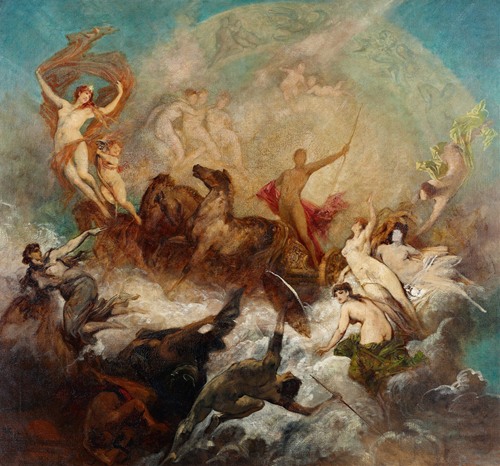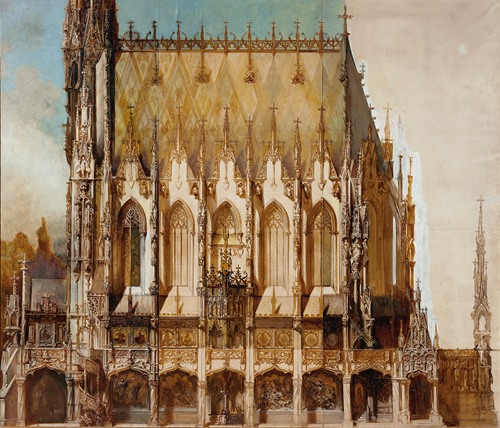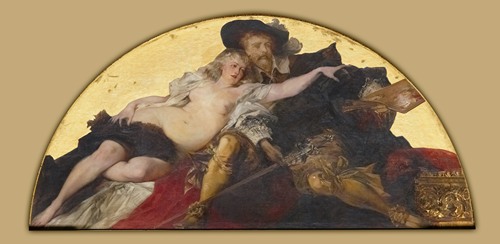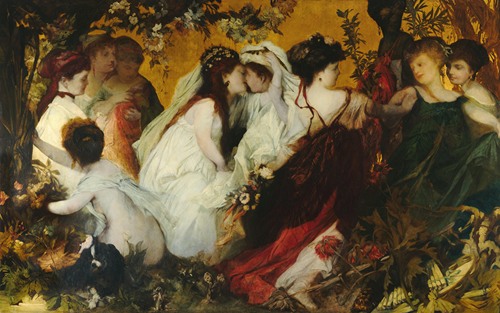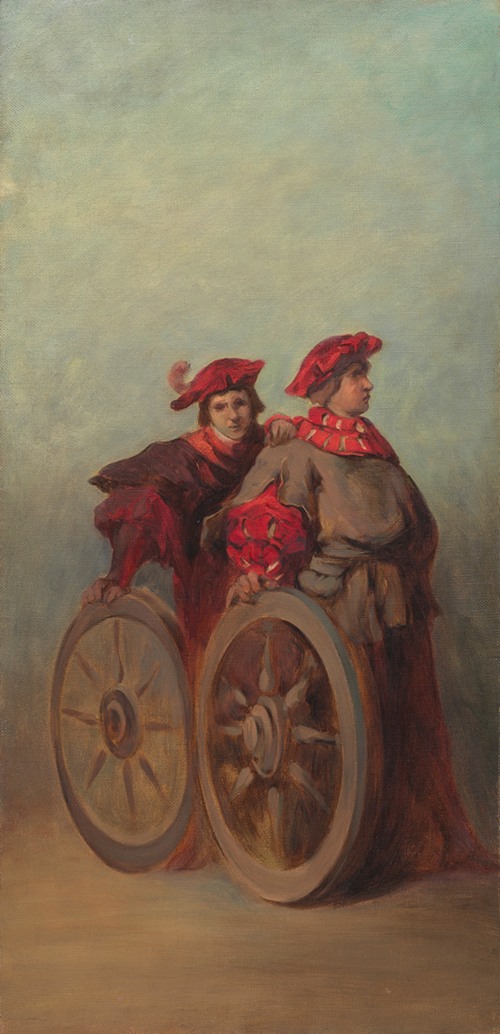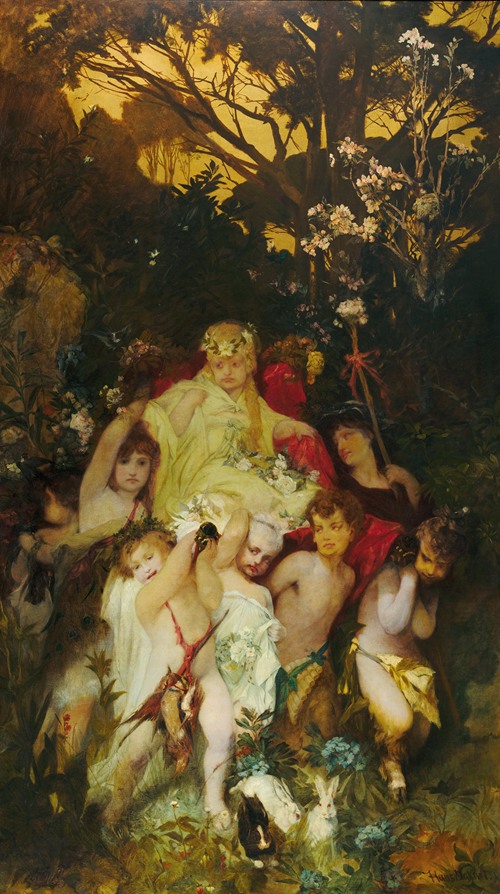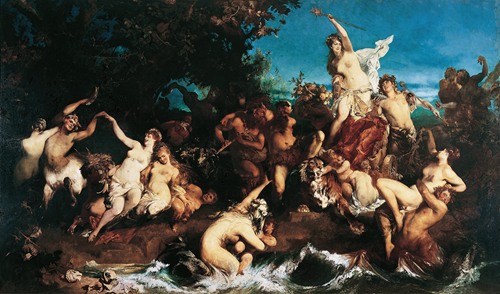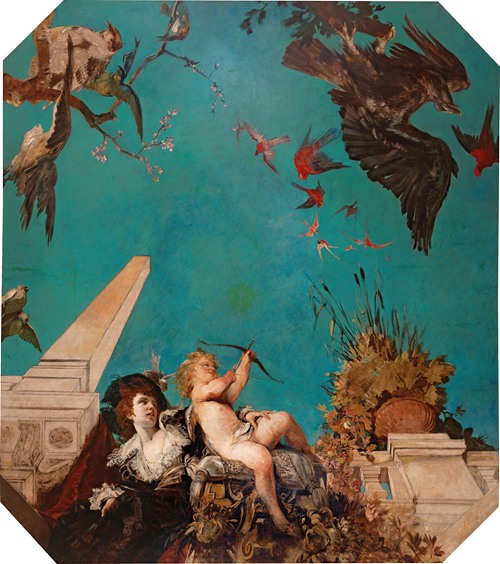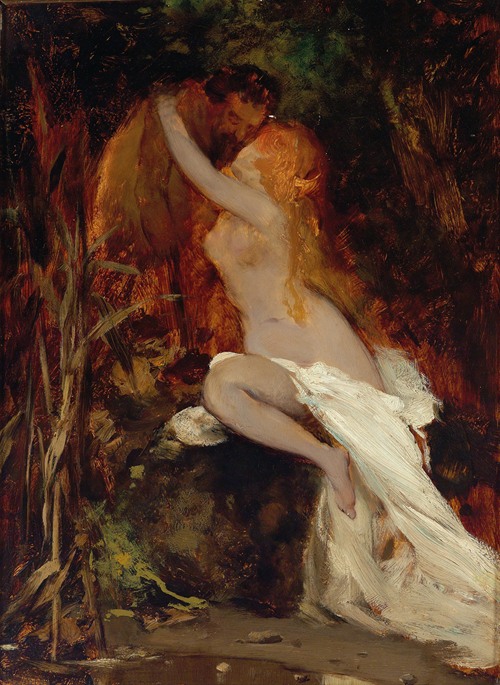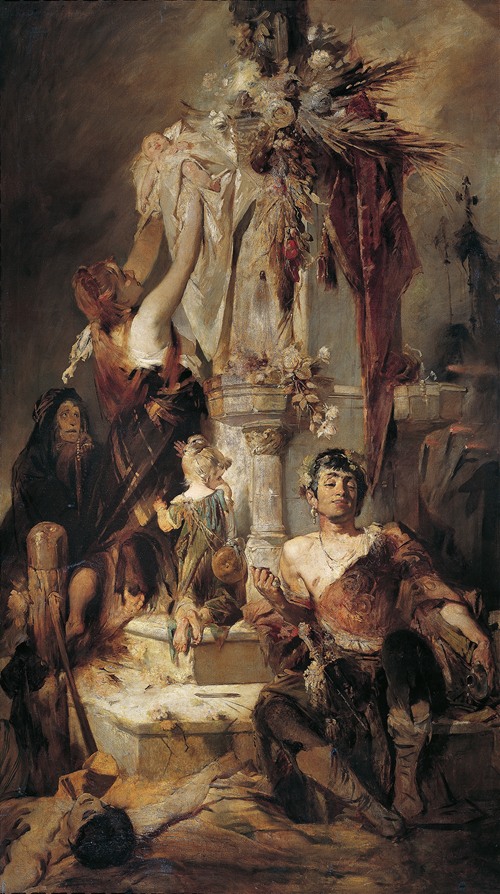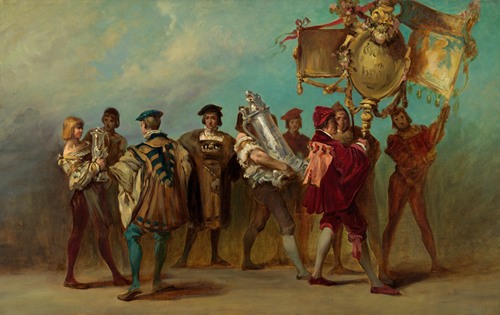

Hans Makart was a 19th-century Austrian academic history painter, designer, and decorator. He is best known for his influence on Gustav Klimt and other Austrian artists, but in his own era he was considered an important artist himself and a celebrity figure in the high culture of Vienna and attended with almost cult-like adulation.
Makart was the son of a chamberlain at the Mirabell Palace, born in the former residence of the prince-archbishops of Salzburg, the city in which Mozart had been born. Initially, he received his training in painting at the Vienna Academy between 1850 and 1851 from Johann Fischbach. While in the Academy, German art was under the rule of a classicism, which was entirely intellectual and academic—clear and precise drawing, sculpturesque modelling, and pictorial erudition were esteemed above all. Makart, who was a poor draughtsman, but who had a passionate and sensual love of color, was impatient to escape the routine of art school drawing. For his fortune, he was found by his instructors to be devoid of all talent and forced to leave the Vienna Academy.
He went to Munich, and after two years of independent study attracted the attention of Karl Theodor von Piloty, under whose guidance, between 1861 and 1865 he developed his painting style. During these years, Makart also travelled to London, Paris and Rome to further his studies. The first picture he painted under Piloty, Lavoisier in Prison, though it was considered timid and conventional, attracted attention by its sense of color. In his next work, The Knight and the Water Nymphs, he first displayed the decorative qualities to which he afterwards sacrificed everything else in his work. His fame became established in the next year, with two works, Modern Amoretti and The Plague in Florence. His painting Romeo and Juliet was soon after bought by the Austrian emperor for the Vienna Museum, and Makart was invited to come to Vienna by the aristocracy.
The prince Von Hohenlohe provided Makart with an old foundry at the Gusshausstraße 25 to use as a studio. He gradually turned it into an impressive place full of sculptures, flowers, musical instruments, requisites and jewellery that he used to create classical settings for his portraits, mainly of women. Eventually his studio looked like a salon and became a social meeting point in Vienna. Cosima Wagner described it as a "wonder of decorative beauty, a sublime lumber-room". His luxurious studio served as a model for a great many upper middle-class living rooms.
Makart became the acknowledged leader of the artistic life of the Vienna, which in the 1870s passed through a period of feverish activity, the chief results of which are the sumptuously decorated public buildings of the Ringstraße. He not only practised painting, but was also an interior designer, costume designer, furniture designer, and decorator, and his work decorated most of the public spaces of the era. His work engendered the term "Makartstil", or "Makart style", which completely characterized the era.
Salzburg's Makart Square, or Makartplatz, was named after the painter.
